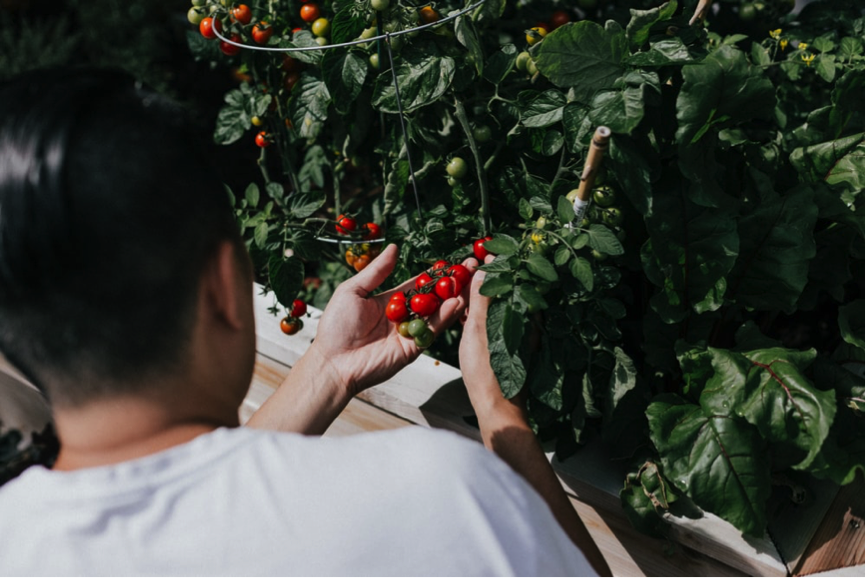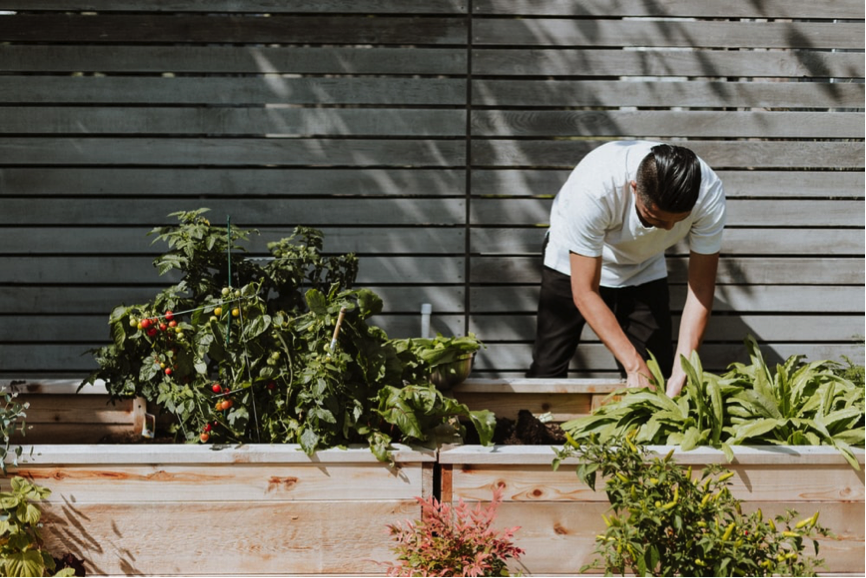A great way to eat healthier and fresher is to grow your own vegetables at home!
 Photos by: Unsplash
Photos by: Unsplash
You don't need a large garden to plant your own vegetable patch. A small area is enough to plant and grow delicious herbs, fresh vegetables and some fruits. The only things you need are:
- ground
- Sun
- water
- A plant pot, pan, bed or plant box
- Enthusiasm and willingness to learn
Using a small space to plant your garden might sound a little tight, but it won't be if you follow our top tips on how to create the perfect vegetable patch in a small space:
Look at the space available
Many of us have a lot more space available than we actually realize. If you have a small garden behind or in front of your house, you don't have to turn the entire lawn into a garden. Especially when the soil is bad or when there is a lack of sun. Instead, you can grow vegetables and herbs in raised beds, planters, and containers. More information on how to get the most out of your space with different containers can be found here. Remember, containers must have adequate drainage systems to prevent rotting. Because of these drainage systems, you will likely need to water your greens much more often than if you were in the ground.
View different container options, sizes and shapes. If you have an area with poor soil, you can either fertilize the soil with compost and manure, or start over in an elevated garden. Raised gardens are usually made of pallet wood and can be as large or as small as you like.
Plan the layout and placement
Before you even buy different types of containers, you need to plan ahead. Measure the space you want the plants to take up, then plan accordingly. Remember that you should also take into account the effects of sunlight and shadows on different parts of the room. It is important that your vegetables get enough sun for them to grow strong. Vegetables like cucumbers, beans and pumpkins can grow vertically – saving a lot of space. You can use triangular placed grids or fences under which you can plant these vegetables to keep them in a vertical growth. Plants that grow vertically not only look good, they also save a lot of space. Your garden can look beautiful too. Create a wonderfully vibrant layout by placing different colored plants along with all of the green spaces. Purple beetroot and red tomatoes add vibrancy. Combining different herbs with textures can also give your garden a beautiful aesthetic. Make a full drawing of your garden layout and create a shopping list according to your plan.

Choice of different vegetables
If you don't have a lot of space, consider choosing plants that don't mind growing on a patio, balcony, or in a small container. You should also prioritize types of vegetables that you are most likely to eat that will thrive in your new garden. Planting a bunch of vegetables just for the sake of experimentation is just wasted. There are many different types of vegetables that are cut and grown. This means that they will grow back even better after the harvest. This means you can cut a few leafy greens for your salads every day and not have to worry about them growing back. The best vegetables in a small space are:
- tomatoes
- Swiss chard
- Kale
- basil
- Sugar pea
- zucchini
- Shallots
- radish
- salad
- Bean
- aubergine
- And of course all kinds of herbs
Maintain a healthy garden
Unfortunately, you can't just drop a seed in the ground and hope for the best. You will have to make extra efforts if you want your patch to reach its optimal capacity. The first thing to consider is the planting season. Vegetables grow all year round, but the best flowering time is in spring and early summer. This is the best time to plant new seeds. Research which vegetables grow best in different seasons. Real gardeners even switch vegetables from season to season. This ensures that the space does not go unused in the winter months. Winter varieties include leaf crops, roots such as carrots and beets, and cabbage such as cauliflower and cabbage. Vegetables that spring and summer love include spinach, peas, chilies, eggplant and all kinds of salads.
Since you're trying to save space, you'll likely be planting a few different vegetables in a container. In doing so, make sure that your combinations are successful. Some plants are great companions, some aren't. Planting beans between sugar snap peas is a great idea. Once the snap peas are used up after the warmer months, the beans are ready to take their place for the winter. Remember to keep an eye out for pests that like to eat leaves and vegetables. While snails are cute, they can really harm your crops if left unattended. Make sure you remove old and dry leaves so your plant has time to grow new ones. Also, remove weeds from the soil and other pesky plants that rob the soil of food. Go here and click on Live Grow Garden for more top tips on how to care for your new patch.
If you carefully plan the small area available for your new spot of freshness, you can optimize growth and production. Keep an eye out for pests and proper sun exposure, and don't forget to water your new patch regularly. If you are away from home for a long time, ask someone to do the watering. You never have to go to a grocery store before you know it.




